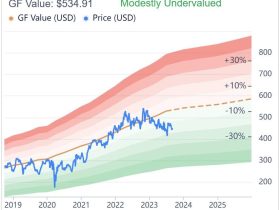Oil futures settled with a loss on Friday, but scored a second straight weekly gain after the Oct. 7 attack on Israel by Hamas sparked a war that threatens to spillover across the region, potentially endangering the supply of crude.
Natural-gas prices, meanwhile, marked an eighth consecutive session decline after a U.S. government report on Thursday revealed a bigger-than-expected weekly rise in supplies of the fuel.
Price action
-
On its expiration day, West Texas Intermediate crude for November delivery
CL.1,
+0.30% CLX23,
+0.30%
fell 62 cents, or 0.7%, to end at $88.75 a barrel on the New York Mercantile Exchange, for a 1.2% weekly rise, according to Dow Jones Market Data. December WTI
CLZ23,
+0.25% ,
which is the new front-month contract
CL00,
+0.25% ,
shed 29 cents, or 0.3%, to settle at $88.08 a barrel. -
December Brent crude
BRN00,
+0.38% BRNZ23,
+0.38% ,
the global benchmark, fell 22 cents, or 0.2%, at $92.16 a barrel on ICE Futures Europe, ending 1.4% higher for the week. -
November gasoline
RBX23,
+0.10%
rose 0.5% to $2.37 a gallon, for a 4.8% weekly advance. November heating oil
HOX23,
+0.38%
declined by 0.5% to settle at $3.16 a gallon, but logged a 1.7% weekly fall. -
November natural gas
NGX23,
+0.69%
lost 2% to $2.90 per million British thermal units, for a more than 10% weekly slide.
Market drivers
“The volatility of crude prices continues to be influenced by the escalating conflict between Israel and Hamas, despite the minimal direct impact on actual supply and demand conditions,” Brian Swan, senior commodity analyst, Global Research & Analytics, at Schneider Electric wrote in a daily note.
Oil was lifted in electronic trade late Thursday after a U.S. Navy warship has intercepted multiple missiles near Yemen. A Pentagon press secretary told reporters that a Navy destroyer intercepted three missiles and several drones that were launched by Iran-backed Houthi forces in Yemen, but their target was unknown.
With the Houthi and other terrorist factions “entering the picture with missiles firing everywhere, shipping markets are highly vulnerable to these developments in the Middle East,” said Stephen Innes, managing partner at SPI Asset Management, told MarketWatch.
Read: Here’s what the Israel-Hamas war has done to U.S. gasoline and diesel prices
He sees two distinct geopolitical scenarios to consider. The first one is a conflict that remains “localized within Israel, which will have minimal impact on oil prices,” and the other is a situation that “escalates into a broader regional conflict that impacts shipping activities through the Strait of Hormuz.”
Expectations for an imminent Israeli ground invasion of Gaza have helped push up crude prices this week, analysts said.
While the conflict so far hasn’t altered the supply picture, “the tense situation in the Middle East does justify a certain geopolitical risk premium for the time being,” said Barbara Lambrecht, commodity analyst at Commerzbank, in a note.
“Oil prices are therefore likely to remain well supported, especially as the oil market is significantly undersupplied at present anyway,” she said, noting that U.S. crude-oil stocks are now nearly 5% lower than usual for this time of year, compared with February when they stood 10% above the five-year average (see chart below).
Read: U.S. oil production hits record as Israel-Hamas conflict stokes global supply fears
Separately, the U.S. Energy Department said it would post monthly solicitations to buy oil for its Strategic Petroleum Reserve through at least May 2024, with the first request for up to 6 million barrels of oil for delivery in December and January. The government agency said it plans to buy oil at a price of $79 a barrel or below, which is less than the average $95 it received for 2022 emergency SPR sales.
Natural gas, meanwhile, finished lower Friday for an eighth session in a row, the longest daily losing streak since Oct. 2, 2019, according to Dow Jones Market Data.
Data Thursday from the Energy Information Administration revealed a bigger-than-expected weekly rise in U.S. natural-gas supplies in storage.
Forecasts for above-normal temperatures in parts of the U.S. in the months ahead, which reduce demand prospects for natural gas as a heating fuel, has also contributed to the price losses, said Brian Steinkamp, commodity analyst, Global Research & Analytics, at Schneider Electric.
Read the full article here













Leave a Reply